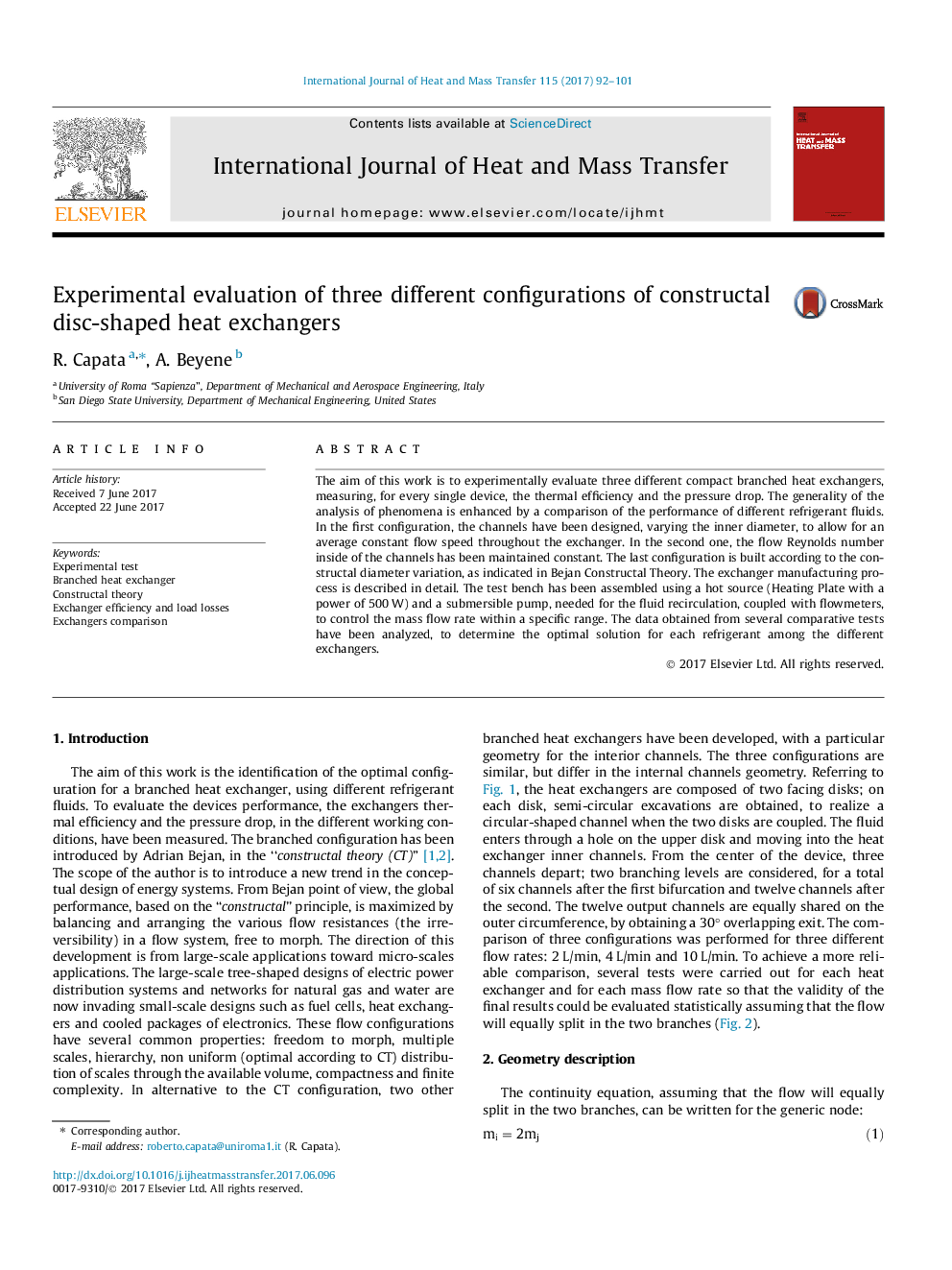| Article ID | Journal | Published Year | Pages | File Type |
|---|---|---|---|---|
| 4993451 | International Journal of Heat and Mass Transfer | 2017 | 10 Pages |
Abstract
The aim of this work is to experimentally evaluate three different compact branched heat exchangers, measuring, for every single device, the thermal efficiency and the pressure drop. The generality of the analysis of phenomena is enhanced by a comparison of the performance of different refrigerant fluids. In the first configuration, the channels have been designed, varying the inner diameter, to allow for an average constant flow speed throughout the exchanger. In the second one, the flow Reynolds number inside of the channels has been maintained constant. The last configuration is built according to the constructal diameter variation, as indicated in Bejan Constructal Theory. The exchanger manufacturing process is described in detail. The test bench has been assembled using a hot source (Heating Plate with a power of 500Â W) and a submersible pump, needed for the fluid recirculation, coupled with flowmeters, to control the mass flow rate within a specific range. The data obtained from several comparative tests have been analyzed, to determine the optimal solution for each refrigerant among the different exchangers.
Keywords
Related Topics
Physical Sciences and Engineering
Chemical Engineering
Fluid Flow and Transfer Processes
Authors
R. Capata, A. Beyene,
